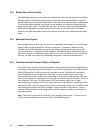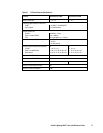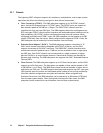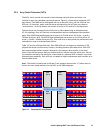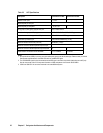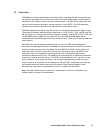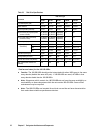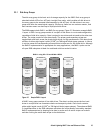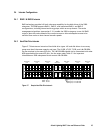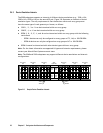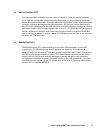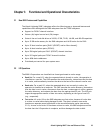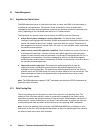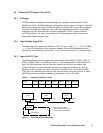
24 Chapter 2
Subsystem Architecture and Components
Figure 2.6 illustrates RAID-5 data stripes mapped over four physical drives. Data and parity
are striped across each of the disk drives in the array group (hence the term “parity group”).
The logical devices (LDEVs) are evenly dispersed in the array group, so that the performance
of each LDEV within the array group is the same. Figure 2.6 also shows the parity chunks
that are the “Exclusive OR” (EOR) of the data chunks. The parity and data chunks rotate
after each stripe. The total data in each stripe is either 24 logical tracks (eight tracks per
chunk) for S/390
®
data, or 2304 blocks (768 blocks per chunk) for open-systems data. Each of
these array groups can be configured as either 3380-x, 3390-x, or OPEN-x logical devices. All
LDEVs in the array group must be the same format (3380-x, 3390-x, or OPEN-x). For open
systems, each LDEV is mapped to a SCSI address, so that it has a TID and logical unit number
(LUN).
Track 0
to
Track 7
Parity
Tracks
Track 8
to
Track 15
Parity
Tracks
Track 16
to
Track 23
next
8
tracks
Parity
Tracks
next
8
tracks
RAID-5 using 3D + P and S/390® LDEVs
Parity
Tracks
Track 24
to
Track 31
Track 32
to
Track 39
Track 40
to
Track 47
next
8
tracks
next
8
tracks
next
8
tracks
next
8
tracks
Figure 2.6 Sample RAID-5 Layout (Data Plus Parity Stripe)
Note: The Hitachi CruiseControl and Graph-Track products (see section 3.7) allow users to
collect and view detailed usage statistics for the disk array groups in the 9900 subsystem.
2.3.2 Sequential Data Striping
The 9900 subsystem’s enhanced RAID-5+ implementation attempts to keep write data in
cache until parity can be generated without referencing old parity or data. This capability to
write entire data stripes, which is usually achieved only in sequential processing
environments, minimizes the write penalty incurred by standard RAID-5 implementations.
The device data and parity tracks are mapped to specific physical disk drive locations within
each array group. Therefore, each track of an LDEV occupies the same relative physical
location within each array group in the subsystem.



